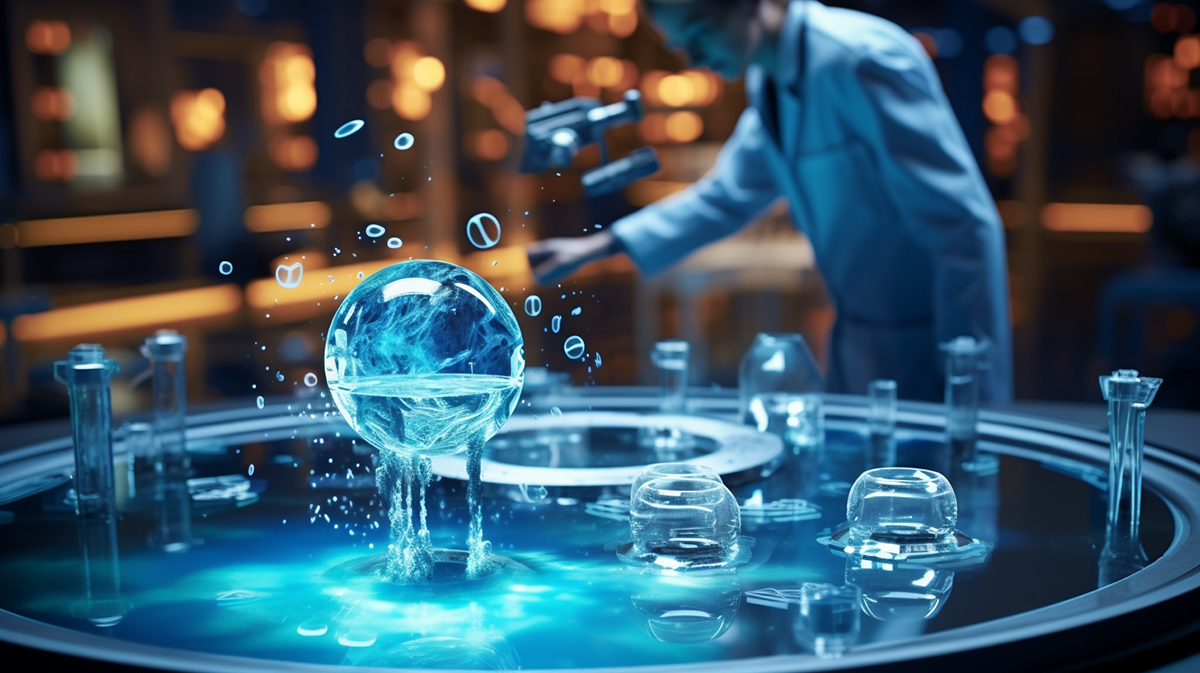Revolutionary Breakthrough: Unprecedented Water-Resistant Surface Created

In a groundbreaking advancement, a Finnish research team, led by Robin Ras, has developed an innovative water-resistant surface. Comprised of solid silicon with a liquid-like outer layer, this surface redefines existing theories on water-solid friction.
With its potential applications spanning numerous industries and everyday life, this development marks a pivotal moment in the pursuit of durable water-repellent technologies.
This article explores the creation, properties, potential uses, and challenges of this revolutionary surface.
Key Takeaways
- Water-resistant surfaces can revolutionize household tasks and industry.
- The most water-resistant surface has been developed by a research team in Finland.
- The slipperiness of the surface is highest when the self-assembled monolayer (SAM) coverage is low or high.
- The water-resistant surface has potential applications in heat transfer, de-icing, anti-fogging, and microfluidics.
The Importance of Water-Resistant Surfaces
Transforming both mundane household tasks and complex industrial operations, water-resistant surfaces play a pivotal role in a myriad of applications ranging from plumbing and shipping to the auto industry.
The impact of water-resistant surfaces on everyday life and industry is profound, simplifying procedures, enhancing safety, and contributing to the efficiency of processes.
Advanced research in this field promises further improvements, opening up new avenues for the future of water-resistant technology in various fields. For instance, developments in creating surfaces with enhanced slipperiness promise to revolutionize areas like heat transfer, de-icing, anti-fogging, and microfluidics.
Moreover, the potential introduction of self-cleaning surfaces can significantly alter domestic settings and public spaces, offering a cleaner, more hygienic environment.
The cumulative effect of these advancements is expected to be transformative.
The Birth of a Revolutionary Surface
In a groundbreaking development, a research team in Finland, led by Robin Ras, has successfully created an unprecedented water-resistant surface, significantly challenging existing theories about the interaction between water and solid surfaces.
This advancement in surface technology is characterized by a silicon base coated with a self-assembled monolayer that mimics the liquid state, enhancing the surface’s repellency towards water.
The discovery not only defies traditional understanding of interfacial friction but also paves the way for far-reaching implications across various industries.
From heat transfer in pipes to self-cleaning surfaces, the potential applications are vast.
This revolutionary surface, with its exceptional slipperiness, can revolutionize tasks and processes where droplet-repellent surfaces are integral, thus marking a significant milestone in surface technology.
Investigating Slipperiness and Coverage
While delving deeper into the mechanics of this breakthrough, it was discovered that the slipperiness of the surface peaks when the coverage of the self-assembled monolayer (SAM) is either low or high.
This insight emerged through an understanding of friction at a molecular level, involving the interaction between the water molecules and the SAM.
Low SAM coverage exposes more of the silicon surface, enhancing hydrophobicity and slipperiness. Conversely, at high coverage, the SAM becomes the dominant factor contributing to slipperiness.
However, optimizing surface coverage remains a critical issue, given that the middle range of SAM coverage results in reduced slipperiness. This counterintuitive finding has motivated further exploration into the relationship between SAM coverage and surface slipperiness.
Exploring Potential Applications
Potential applications of this revolutionary water-resistant surface extend beyond mere laboratory curiosity, promising significant advancements in diverse fields such as heat transfer, de-icing, anti-fogging, and microfluidics.
In industry, this breakthrough presents transformative possibilities for shipping, auto manufacturing, and plumbing, enhancing efficiency and performance. The surface’s unique properties can drastically improve heat transfer in pipes, presenting an innovative solution to persistent issues in energy production and distribution.
In everyday household uses, it can revolutionize cooking and cleaning by creating self-cleaning surfaces, reducing effort and increasing hygiene.
This water-resistant surface also holds promise in optics and transportation, offering anti-fogging solutions for eyewear and vehicles.
These applications signify a major leap in technology, impacting daily life and industrial processes.
Examining Durability and Challenges
Despite its revolutionary potential, the durability of the self-assembled monolayer (SAM) coating presents a significant challenge due to its thinness and easy dispersal upon physical contact. This raises concerns about the challenges in real-world implementation.
Its susceptibility to damage could limit the practical application of the surface, particularly in environments where it may be exposed to regular or intense physical contact. Improving the longevity of water-resistant surfaces thus becomes a priority, requiring further research into fortifying the SAM coating without compromising its water-repellent properties.
The development of an armour-plated superhydrophobic surface by Aalto University offers a potential model, suggesting that integrating such durability features into the SAM coating could be a viable solution.
Previous Developments in Water-Repellency
Building on our exploration of durability challenges, let’s take a closer look at previous advancements in the field of water-repellency.
A pivotal contribution came from Aalto University where a robust superhydrophobic surface was developed, revolutionizing the understanding of water-repellent coatings. It was a significant advancement, but not without its challenges.
The self-assembled monolayers (SAM) coatings, while effective in water repulsion, posed durability issues due to their thinness and easy dispersal upon physical contact. This necessitated research into enhancing the resilience of these coatings.
The breakthrough in creating a more durable, water-resistant surface has had profound implications, opening up possibilities for applications in various industries and setting the foundation for the latest groundbreaking development.
The creation of an unprecedented water-resistant surface signifies a remarkable breakthrough in material science. Expanding the boundaries of our understanding of friction and interfacial interactions, it paves the way for extensive applications, from improving industrial processes to enhancing daily life utilities.
Despite challenges in durability and self-assembly, the potential benefits of this technology are immense, marking a substantial advancement in the development of durable water-repellent technologies.



